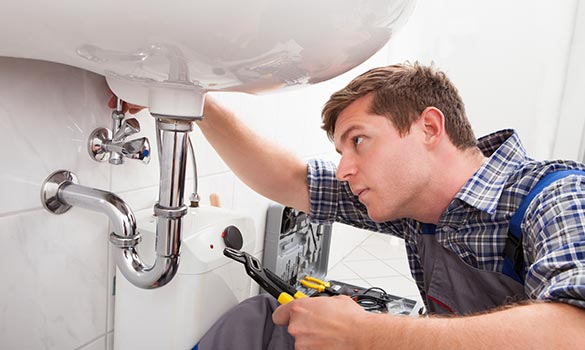Discover Australia's Finest
Explore the latest news, insights, and stories from down under.
Drips and Dreams: When to Call in the Plumber vs. DIY Disaster
Discover the tipping point between DIY plumbing and calling the pros! Avoid costly disasters with expert tips in Drips and Dreams.
Signs You Need a Plumber: When DIY Isn't Enough
Many homeowners pride themselves on their ability to tackle minor repairs and maintenance tasks around the house. However, there are certain situations where DIY methods can do more harm than good, especially when it comes to plumbing issues. One of the first signs you need a plumber is persistent leaks. If you find that a leak persists despite your best efforts to fix it with tape or sealants, it may indicate a deeper problem in your pipes. Furthermore, if you notice water stains on your walls or ceilings, it could signal a hidden leak that requires professional inspection.
Another indicator that you should call in a qualified plumbing professional is frequent clogs that cannot be resolved with a plunger or over-the-counter drain cleaners. While occasional clogs can happen in any home, signs you need a plumber become apparent when the same drain continues to back up. Additionally, if you experience low water pressure or discolored water, these may be symptoms of serious plumbing issues that a plumbing expert can diagnose effectively. Ignoring these signs not only complicates the problem but can also lead to costly repairs down the road.

Common DIY Plumbing Mistakes and How to Avoid Them
DIY plumbing can be a rewarding and cost-effective way to tackle household issues, but it's easy to make mistakes that can lead to bigger problems. One of the common DIY plumbing mistakes is underestimating the importance of proper measurements. Failing to accurately measure pipes and fittings can result in leaks, clogs, or worse, and might necessitate the replacement of parts that could have been avoided. Always double-check your measurements before cutting or purchasing materials to ensure a snug fit.
Another frequent pitfall is neglecting to turn off the water supply before starting any plumbing project. Forgetting this crucial step can lead to messy water spills and costly damage. To prevent such mishaps, create a checklist of tasks to complete before beginning your work - this should include turning off the main water supply and relieving pressure in the pipes. By being diligent and prepared, you can avoid the most common DIY plumbing mistakes and keep your home safe from unnecessary water damage.
How to Decide: Call a Plumber or Tackle It Yourself?
When facing a plumbing issue, a common dilemma arises: should you call a plumber or attempt to tackle the problem yourself? The answer often depends on the severity and type of the issue at hand. For minor leaks or clogs, DIY methods can be effective and cost-efficient. Simple tasks such as clearing a blocked drain or replacing a faucet washer can often be managed with basic tools and a bit of research. However, if the problem involves major plumbing systems, such as sewage backups or water heater failures, it’s advisable to call in a professional to avoid further complications.
To make an informed decision, consider the following factors:
- Skill level: Evaluate your own plumbing knowledge and experience. If you feel confident, you might save money and learn something new.
- Time: Assess how much time you have to dedicate. Complex repairs could take longer than expected, whereas a plumber can often diagnose and fix issues quickly.
- Cost: Compare the potential costs of DIY repairs against hiring a professional. Sometimes, spending a bit more upfront on a qualified plumber can save you from costly repairs down the line.